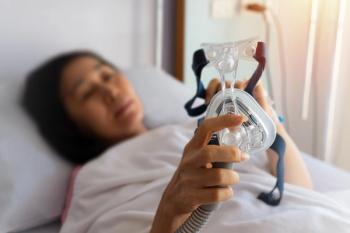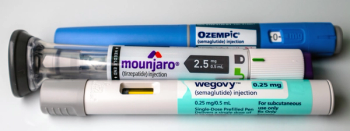
- Spring 2023
- Volume 17
- Issue 1
Despite Rapid Growth of Institutions, Pharmacy School Applications Decline
Students still have a myriad of career options, including at retail pharmacies, hospitals, and outside traditional practice.
Although the number of pharmacy schools in the United States has nearly doubled since the early 2000s, the number of applicants has declined sharply, leading to concerns among certain experts. In 2000, there were 80 pharmacy schools in the country, but over the next 20 years, the number grew to 143, which some researchers say may be unsustainable. Such expansion can have unintended consequences, including less competitiveness for applicants and potentially less funding for pharmacy programs.1
A pharmacist shortage in the late 1990s that peaked in 2001 resulted in higher wages and more pharmacy school applications, and the trend continued as many universities saw the revenue potential of pharmacy programs.1 The number of graduates also increased sharply, from 7000 in 2001 to 11,931 in 2011.2
“Toward the late 1990s, there was a large increase in applications to pharmacy schools, which ran in parallel with a large number of new schools opening and established schools increasing enrollment,” said Edward Foote, BSPharm, dean of the Philadelphia College of Pharmacy in Pennsylvania, in an email to Pharmacy Times®. “There were many more applications than there were seats, and competition…was tough.”
As early as 2005, some experts were warning that the sharp increase in programs could lead to school closures and jobless graduates, but the growth continued largely unabated. In recent years, data from the American Association of Colleges of Pharmacy (AACP) has confirmed the validity of those early warnings, particularly for the sustainability of pharmacy programs.
Perhaps most notably, AACP data have shown significant decreases in the number of students interested in pursuing pharmacy careers. In fall 2011, it found that there were 106,815 applicants to pharmacy schools, a figure that dropped to 76,525 by fall 2015 and 40,552 by fall 2021. In less than a decade, pharmacy school applications had decreased by more than 60%.1
As a result, acceptance rates increased dramatically, from 65.9% in 2004 to 86.8% in 2020, the most recent year for which data are available.3 Data from PharmCAS, the online application platform used by most programs, also suggests that applicants feel confident about the likelihood of acceptance, submitting fewer applications each.3
Luckily for most schools, enrollment has not declined as sharply, although it is still lower than at its peak. AACP data show that there were 61,275 students enrolled in PharmD programs across the country in 2012. The figure remained above 60,000 through 2019, although in 2018 the number of enrolled students surpassed the number of applicants for the first time.2 In 2020, enrollment rates finally began to decline, with 57,375 students that school year and 53,516 in 2021.2
Among the potential causes for this decline, Foote pointed to the increasingly saturated market for pharmacists, which meant that students had fewer guaranteed jobs upon graduation and salaries that had begun to stagnate.
“At the same time, companies (mostly retail) were asking more and more of their folks because margins are thin and there were pharmacists who needed jobs,” Foote said. “Then the pandemic hit, and while pharmacists did a great job, it came to light how hard the job is.”
Nevertheless, there are potential solutions and strategies for survival. In a 2020 commentary published in the American Journal of Pharmaceutical Education, the authors suggested increased collaboration between schools and curriculum changes to compensate for lower revenue. For instance, smaller class sizes with new resources and reduced expenses could help pharmacy schools adjust. Additionally, some schools are attempting to attract applicants by lowering barriers to applications, such as not requiring the Pharmacy College Admission Test.1
“I think we do a better job with smaller class sizes, but colleges have a lot of costs and many of them are fixed, so it becomes a balance,” Foote explained.
On a broader scale, pharmacy associations and organizations are tackling the issue by enhancing public awareness of pharmacists, attracting new pharmacy staff, and strengthening the job market. If the pharmacist job market returns to its early-2000s high, the authors noted, pharmacy school applications will follow.1 Focusing on financially sustainable, patient-oriented positions for all practice settings may be the best approach to strengthening the job market as well as pharmacy schools.
For students, many exciting postgraduation options still exist. “There are lots of jobs,” Foote said. “Retail [pharmacies] and hospitals are hiring. What’s great about pharmacy is [that] there are so many opportunities outside traditional pharmacy practice.”
References
1. Brown, DL. Years of rampant expansion have imposed Darwinian survival-of-the-fittest conditions on US pharmacy schools. Am J Pharm Educ. 2020;84(10):ajpe8136. doi:10.5688/ajpe8136
2. Brown, DL. A Looming Joblessness Crisis for new pharmacy graduates and the implications it holds for the Academy. Am J Pharm Educ. 2013;77(5):90. doi:10.5688/ajpe77590
3. Pharmacy College Application Service. 2019-2020 PharmCAS Applicant Data Report. Accessed February 6, 2023. https://connect.aacp.org/communities/groupdetails/digestviewer/viewthread?GroupId=295&MessageKey=84b4a76b-47bb-4d79-9e83-36f56bec5b16&CommunityKey=aeb59d45-0cea-44ef-8060-29508a5725eb&tab=digestviewer&ReturnUrl=%2Fcommunities%2Fgroupdetails%2Fdigestviewer%3Ftab%3Ddigestviewer%26CommunityKey%3Daeb59d45-0cea-44ef-8060-29508a5725eb
Articles in this issue
over 2 years ago
When Using Social Media, Always Consider Professionalism Firstover 2 years ago
Pharmacy Students Experience Compounded Mental Health Stigmasover 2 years ago
Women in Pharmacy Should Band Together to Overcome Obstaclesover 2 years ago
Wellness Support Group Shows Promise in Reducing Burnoutover 2 years ago
NCPA Fellowship Allows Pharmacists to Choose Their Own AdventureNewsletter
Stay informed on drug updates, treatment guidelines, and pharmacy practice trends—subscribe to Pharmacy Times for weekly clinical insights.

















































































































































































































